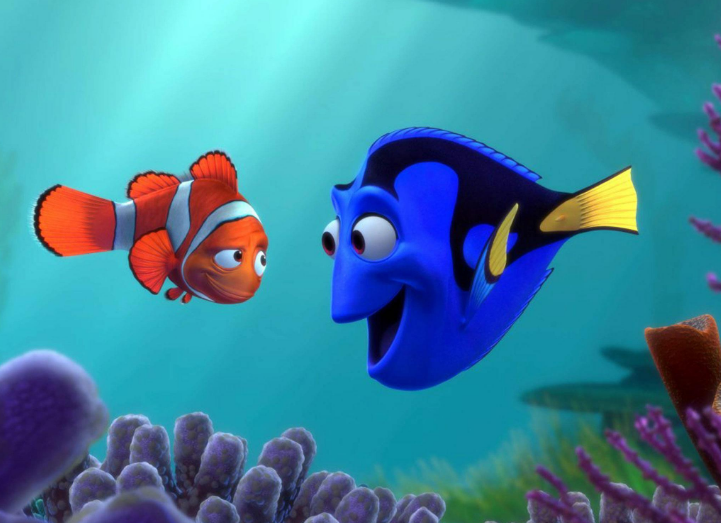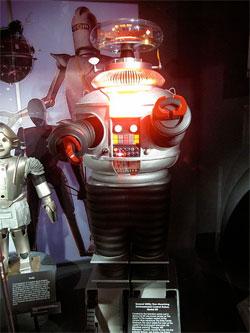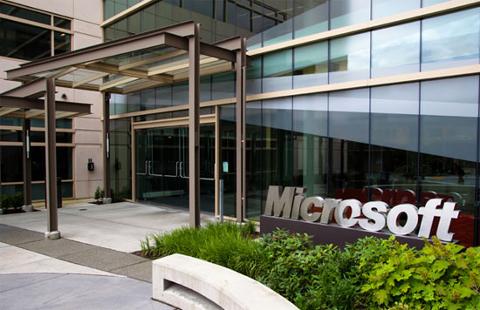 Like many companies, Disney leverages open-source software to keep its backend systems running. What tech pros might not know is that Disney makes its open-source work available via a GitHub repository. What does the Mouse House offer in terms of software? Some of the company’s open-source projects are administrative: Munki, for example, allows OS X admins to manage software installs and removals on OS X client machines. Other software packages are more creatively oriented: take Ptex, a texture-mapping system developed by Walt Disney Animation Studios for production-quality rendering, or Alembic, which allows digital artists to hand off work to other professionals for additional lighting, rendering, and simulation. Given how Disney owns Pixar, the movie studio responsible for “Toy Story” and other CG-animated films, the prevalence of open-source animation software is no surprise. While most tech pros aren’t interested in founding their own animation studio (and certainly don’t have the budget to do so), Disney even offers up USD, which it claims is the core of Pixar’s 3D graphics pipeline, “used in every 3D offering and rendering application.” As Disney’s documentation suggests, much of this software is also useful for game-makers who want to create realistic simulations of physics. Anyone interested in 3D graphics or rendering may likewise find something useful in the repository. If you’re interested in learning more about the nuts and bolts of computer animation, Pixar also offers a short course through Khan Academy. You won’t gain the skills necessary to create and animate a film-quality character—like many disciplines, that takes years of practice and study—but you may complete the lessons with a greater appreciation for what gaming and movie pros do. (Get ready to absorb terms like Bezier curves and De Casteljau’s algorithm.) Decades ago, Walt Disney made his eponymous company an entertainment powerhouse through simple pen, ink, and celluloid. Although he likely would have appreciated the power of computer-based animation, he might have struggled to understand how exactly it works. We’ve come a long way from the days of inked cels and film processing. (Speaking of technology, was Walt Disney’s body cryogenically frozen, as urban legend suggests? Let’s just let it go.)
Like many companies, Disney leverages open-source software to keep its backend systems running. What tech pros might not know is that Disney makes its open-source work available via a GitHub repository. What does the Mouse House offer in terms of software? Some of the company’s open-source projects are administrative: Munki, for example, allows OS X admins to manage software installs and removals on OS X client machines. Other software packages are more creatively oriented: take Ptex, a texture-mapping system developed by Walt Disney Animation Studios for production-quality rendering, or Alembic, which allows digital artists to hand off work to other professionals for additional lighting, rendering, and simulation. Given how Disney owns Pixar, the movie studio responsible for “Toy Story” and other CG-animated films, the prevalence of open-source animation software is no surprise. While most tech pros aren’t interested in founding their own animation studio (and certainly don’t have the budget to do so), Disney even offers up USD, which it claims is the core of Pixar’s 3D graphics pipeline, “used in every 3D offering and rendering application.” As Disney’s documentation suggests, much of this software is also useful for game-makers who want to create realistic simulations of physics. Anyone interested in 3D graphics or rendering may likewise find something useful in the repository. If you’re interested in learning more about the nuts and bolts of computer animation, Pixar also offers a short course through Khan Academy. You won’t gain the skills necessary to create and animate a film-quality character—like many disciplines, that takes years of practice and study—but you may complete the lessons with a greater appreciation for what gaming and movie pros do. (Get ready to absorb terms like Bezier curves and De Casteljau’s algorithm.) Decades ago, Walt Disney made his eponymous company an entertainment powerhouse through simple pen, ink, and celluloid. Although he likely would have appreciated the power of computer-based animation, he might have struggled to understand how exactly it works. We’ve come a long way from the days of inked cels and film processing. (Speaking of technology, was Walt Disney’s body cryogenically frozen, as urban legend suggests? Let’s just let it go.) Check Out Disney's Open-Source Tools
 Like many companies, Disney leverages open-source software to keep its backend systems running. What tech pros might not know is that Disney makes its open-source work available via a GitHub repository. What does the Mouse House offer in terms of software? Some of the company’s open-source projects are administrative: Munki, for example, allows OS X admins to manage software installs and removals on OS X client machines. Other software packages are more creatively oriented: take Ptex, a texture-mapping system developed by Walt Disney Animation Studios for production-quality rendering, or Alembic, which allows digital artists to hand off work to other professionals for additional lighting, rendering, and simulation. Given how Disney owns Pixar, the movie studio responsible for “Toy Story” and other CG-animated films, the prevalence of open-source animation software is no surprise. While most tech pros aren’t interested in founding their own animation studio (and certainly don’t have the budget to do so), Disney even offers up USD, which it claims is the core of Pixar’s 3D graphics pipeline, “used in every 3D offering and rendering application.” As Disney’s documentation suggests, much of this software is also useful for game-makers who want to create realistic simulations of physics. Anyone interested in 3D graphics or rendering may likewise find something useful in the repository. If you’re interested in learning more about the nuts and bolts of computer animation, Pixar also offers a short course through Khan Academy. You won’t gain the skills necessary to create and animate a film-quality character—like many disciplines, that takes years of practice and study—but you may complete the lessons with a greater appreciation for what gaming and movie pros do. (Get ready to absorb terms like Bezier curves and De Casteljau’s algorithm.) Decades ago, Walt Disney made his eponymous company an entertainment powerhouse through simple pen, ink, and celluloid. Although he likely would have appreciated the power of computer-based animation, he might have struggled to understand how exactly it works. We’ve come a long way from the days of inked cels and film processing. (Speaking of technology, was Walt Disney’s body cryogenically frozen, as urban legend suggests? Let’s just let it go.)
Like many companies, Disney leverages open-source software to keep its backend systems running. What tech pros might not know is that Disney makes its open-source work available via a GitHub repository. What does the Mouse House offer in terms of software? Some of the company’s open-source projects are administrative: Munki, for example, allows OS X admins to manage software installs and removals on OS X client machines. Other software packages are more creatively oriented: take Ptex, a texture-mapping system developed by Walt Disney Animation Studios for production-quality rendering, or Alembic, which allows digital artists to hand off work to other professionals for additional lighting, rendering, and simulation. Given how Disney owns Pixar, the movie studio responsible for “Toy Story” and other CG-animated films, the prevalence of open-source animation software is no surprise. While most tech pros aren’t interested in founding their own animation studio (and certainly don’t have the budget to do so), Disney even offers up USD, which it claims is the core of Pixar’s 3D graphics pipeline, “used in every 3D offering and rendering application.” As Disney’s documentation suggests, much of this software is also useful for game-makers who want to create realistic simulations of physics. Anyone interested in 3D graphics or rendering may likewise find something useful in the repository. If you’re interested in learning more about the nuts and bolts of computer animation, Pixar also offers a short course through Khan Academy. You won’t gain the skills necessary to create and animate a film-quality character—like many disciplines, that takes years of practice and study—but you may complete the lessons with a greater appreciation for what gaming and movie pros do. (Get ready to absorb terms like Bezier curves and De Casteljau’s algorithm.) Decades ago, Walt Disney made his eponymous company an entertainment powerhouse through simple pen, ink, and celluloid. Although he likely would have appreciated the power of computer-based animation, he might have struggled to understand how exactly it works. We’ve come a long way from the days of inked cels and film processing. (Speaking of technology, was Walt Disney’s body cryogenically frozen, as urban legend suggests? Let’s just let it go.) 


